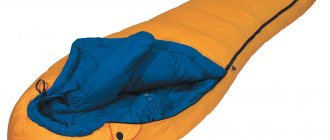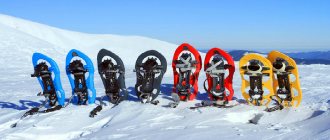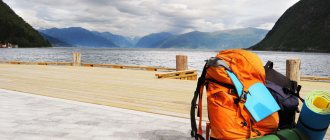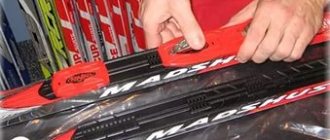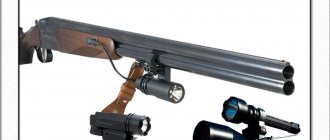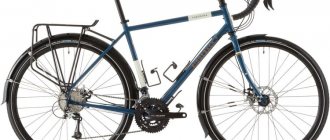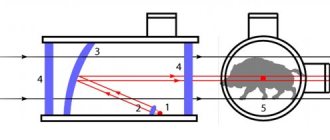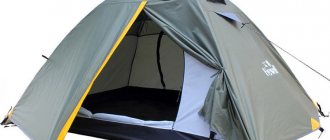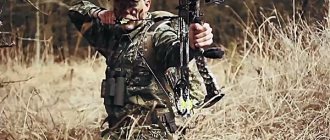Cat device
There are different types of such equipment. The principle of their design can be considered common. The crampons consist of two parts connected to each other by a dimensional bar. The back part of the device is located under the heel, and the front part is attached under the toe. The length of the dimensional bar is adjustable and determines the size of the equipment. There are sharp teeth on the working parts. They can have different shapes and sizes. Their number may vary. The attachment systems for boots are also different.
The connecting strips are made of steel. They are a small strip with holes to adjust the size of the crampons. It is with their help that the device is adjusted to the boot.
Antipodlips play an important role. They are worn under the working parts of the mower (front and back). The presence of such gaskets prevents snow from sticking to the teeth. To walk in the snow, you must purchase anti-slip shoes. They usually do not come with accessories.
Anti-sticks for cats
Types of cats
Climbing crampons can be divided into types according to various criteria: by design, depending on the position of the front teeth, and by the method of fixation. Let's look at each criterion and understand the pros and cons.
Design
Soft crampons attached to regular boots
Based on the type of design, they can be divided into:
- Soft climbing crampons - these can be customized at any time. Convenient on simple routes. Not suitable for difficult vertical climbs;
- Rigid – used for vertical lifts, they reliably support the athlete’s foot. They can only be adjusted using a screwdriver;
- Semi-rigid – suitable for both long treks and short climbs. Their design is rigid, but has a semi-rigid connection between the toe and heel. Suitable for short routes with easy climbs.
Material
Equipment is made from various materials, most often these are:
- Aluminum alloys are good for short trips, not steep slopes, and ski mountaineering. The products are light in weight, but very quickly become unusable;
- Hardened steel is the strongest material and produces wear-resistant products. Suitable for professional use;
- Stainless steel is a less durable material. It wears out faster and cracks with active use.
Shape and number of teeth
By type of teeth there are:
- With vertical front teeth - suitable for technically difficult routes, climbing steep icy slopes. The devices provide excellent grip on icy surfaces;
Ice climbing crampon option from Grivel
- With horizontal front teeth - for easier routes. Not suitable for climbing icy steep walls. Such devices are lighter in weight.
Option of a crampon for mountaineering from Grivel
Most often, products have 10-12 spikes. Sometimes you can find models with 14–16.
Anti-sticks for cats
Antipodlips are something that no athlete can do without. During hikes, ice often alternates with snow, rocky surfaces, and firn. If the temperature is just above zero, snow begins to stick to the pad, which can lead to a complete loss of traction. This poses a danger to life and health. Pausing to stop to clear snow from the block is not always possible, even dangerous.
Anti-stick kit
Take care of convenience and safety in advance. Anti-podlips are rubber or plastic plates attached to the block that prevent snow from sticking. They are often included with modern devices, both expensive and budget options. They can be purchased separately, but keep in mind that often only one type of anti-stick may be suitable for a particular model.
Climbing crampon mounts
According to the method of attachment to mountain boots:
- The soft fastening is universal, suitable for any type of shoe. Consists of elastic straps. With such fasteners it is difficult to ensure a tight fit of the equipment. It takes some skill to put on soft climbing crampons correctly and tightly;
- Automatic – provides the tightest grip of the accessory with the boots. Consists of a shackle at the front of the boot and a frog clasp at the back;
- Semi-automatic - combines both options: in the front part the device is fastened with a strap, in the back it has a frog clasp. It takes practice to securely fasten the product to the shoe.
You can read about the choice of carabiners in the article: Carbines for tourism, how to choose the most suitable one
Types of front teeth
Conventionally, they can be divided into two types. Let's look at their differences using examples of some models.
Vertical front teeth
The disadvantages of rigs with vertical front teeth are that they weigh slightly more than “horizontal” cats. The cost of devices with vertical teeth is slightly higher.
Petzl Sarken
Petzl Sarken crampons
There are models in which such teeth are sharply ground. They have T-shaped notches. These are devices for moving on vertical icy surfaces. They are used on mixed ice routes. With the help of such cats, steep slopes can be overcome.
Grivel Rambo 4
Grivel Rambo 4 crampons
On particularly dangerous routes, mono-tooth rigging is used. A powerful and very sharp tooth ensures mobility in rocky areas. It is indispensable when moving on surfaces with deep cracks.
Grivel G14
Grivel G14 cats
There are models on which one or two teeth can be installed. It is possible to replace damaged teeth. On some cats you can adjust the position of the front teeth.
Horizontal front teeth
Since horizontal crampons are made from light alloys, they weigh a little less. But they wear out faster.
Singing Rock Fakir II
Singing Rock Fakir II crampons
The model is less aggressive and is classic (12 teeth). Such devices are sufficient for mountain climbing and “horizontal” mountaineering. They are perfect for working on snow and summer ice. They are not intended for vertical lifts.
Petzl Leopard LLF
Petzl Leopard LLF crampons
These devices are used for ski touring and ski mountaineering. They are made of aluminum. Walking in such equipment is very comfortable. But rock climbing requires more reliable equipment. To lighten the weight, sometimes one pair of teeth is removed.
Grivel G1 New Classic
Grivel G1 New Classic crampons
This is a ten-tooth model. The lighter weight seems like a great solution for vertical climbing. But that's not true. The model has no serrations on the teeth. We can say that these are cats for beginner climbers and mountain tourists.
III. By type of front teeth
• with horizontal teeth - for classic mountaineering and mountain tourism, “horizontal” mountaineering crampons are quite sufficient. “Horizontal” crampons work well on snow, firn, summer ice, and rocks. If your plans do not include ice climbing and climbing long ice walls, crampons with horizontal front teeth are perfect for you.
• with vertical teeth - designed primarily for working on steep, including steep, or overhanging hard ice. Crampons with such teeth are necessary on technically difficult ice and mixed (rocks + ice) routes.
Cat restraint systems
Each device has two fastenings: rear and front. All of them are divided into two types.
- Flexible mount . This type allows you to attach the device to any shoe. Flexible fastening does not provide rigid fixation. If both bindings are flexible, these crampons cannot be used for extreme climbing. They are perfect for simple routes and horizontal movement.
- Welt fastening . This type of fixation provides a rigid fixation. To secure the equipment you need special shoes. The boots have a special recess. It is called a welt. Boots with a welt are called welted. A wire bracket enters the recess and is fixed in this position. The rear fastening is often performed using the “frog” latch type.
Welted shoes for cats La Sportiva Karakorum Evo GTX Special
Shoes can be:
- rigid with two welts;
- semi-rigid with one edge (front or back);
- non-rigid, completely without welts.
Accordingly, crampons are produced with fastenings with two rigid fastenings, with two flexible fastenings, or with different fastening methods on one model.
How to dress cats?
There are a few tips you need to follow if you want your rig to fit properly and help you get through the toughest bits of road.
- The length of the crampon should be adjusted to the length of the boot platform. The heel is installed first, then the toe. After adjusting the size bar, you can begin fixing the equipment.
- The next step is to fix the toe and adjust the rear fastening.
- When the cat is firmly secured, you need to tighten the safety belt. Such a sling will not allow the device to fall off the leg even if the main fastening accidentally comes off.
Climbing cats.
Climbing cats.
- 2019-01-20 16:49:00
Like no other equipment in a climber’s arsenal, climbing crampons on an ice-snow slope are the main attribute after boots. Crampons on boots should fit like a glove. Unless the sole of your boot is stiff and designed for the mountains, poorly fitting crampons or an inconsistent binding system will inevitably result in crampons coming off at the most inopportune times. Climbing crampons consist of two parts connected by a metal bar with holes for adjustment to the size of the boot. Anti-slip pads (plastic or rubber inserts) help prevent wet snow from sticking and building up under the crampon platform.
For Elbrus, Kazbek, Lenin Peak, any type of 10-12-tooth cats is suitable, either soft or hard. There is only one recommendation - the minimum possible weight and the presence of mobility of the bar. The difference between soft crampons is a flexible bar connecting the 2 parts, which allows the boot and crampons to bend slightly, increasing the comfort of action, in contrast to the firm fixation of hard crampons, and soft fasteners (either in front, or front and back) seem to envelop the boot and are attached when using a harness. A bracket in front and a clamp (frog) in the back of hard crampons, which are inserted into the welts of boots (slots in the front and back of the sole of the boot), when snapped, stretch in the connecting bar and tightly fix this type of crampons to the sole of the boot. These crampons tend to be more aggressive and are used on more technical routes when climbing walls, reducing flexibility and comfort when climbing non-steep sections.
Soft 10-tooth Grivel crampons and 12-tooth classic semi-automatic (soft fastening at the front, welt clip at the back) black diamond crampons
Rigid crampons with vertical front teeth are designed for steep icefalls and more difficult mixed routes (when the path alternates between sections of ice and rocks). Vertical and forged, one or two front teeth in this design are best placed on difficult ice or when performing a difficult move on a rock. The fastening system, as a rule, is the same as for classic mountaineering, with two welts. At the extreme end of the crampon typology are specialty ice climbing crampons that simply bolt directly onto the sole of the boot.
Care and maintenance.
If you want your cats to last a long time, you will need to take care of them. After use, rinse them with clean water, then dry and let them dry before storing. To sharpen the teeth, securely clamp the cat in a vice and using a flat metal hand file, in a forward motion (as taught in labor lessons at school), sharpen any dull areas. It is necessary to sharpen the teeth only on the side edges. To be safe, carefully check the platform using a magnifying glass at the beginning of each season for microcracks. Regularly check the condition of the harness strap, plastic fastenings and fastening rivets so as not to worry about breakage while climbing.
How to choose cats?
The main principle of choice is the suitability of the device for the route you will conquer. Remember that aggressive crampons with sharp teeth and serrations on them and with a rigid fastening under the welt are used on difficult routes with vertical climbs on icy surfaces.
Lightweight models with fewer teeth are designed for horizontal movement on snow and fragile ice. Simple routes do not require the use of heavy and aggressive models.
It is very important to choose the right shoes. After all, the range of possibilities for using a particular model depends on the rigidity of the fastening.
Crampons are often used together with ice picks, about which there is also an article.
III. By type of front teeth
• with horizontal teeth - for classic mountaineering and mountain tourism, “horizontal” mountaineering crampons are quite sufficient. “Horizontal” crampons work well on snow, firn, summer ice, and rocks. If your plans do not include ice climbing and climbing long ice walls, crampons with horizontal front teeth are perfect for you.
• with vertical teeth - designed primarily for working on steep, including steep, or overhanging hard ice. Crampons with such teeth are necessary on technically difficult ice and mixed (rocks + ice) routes.
